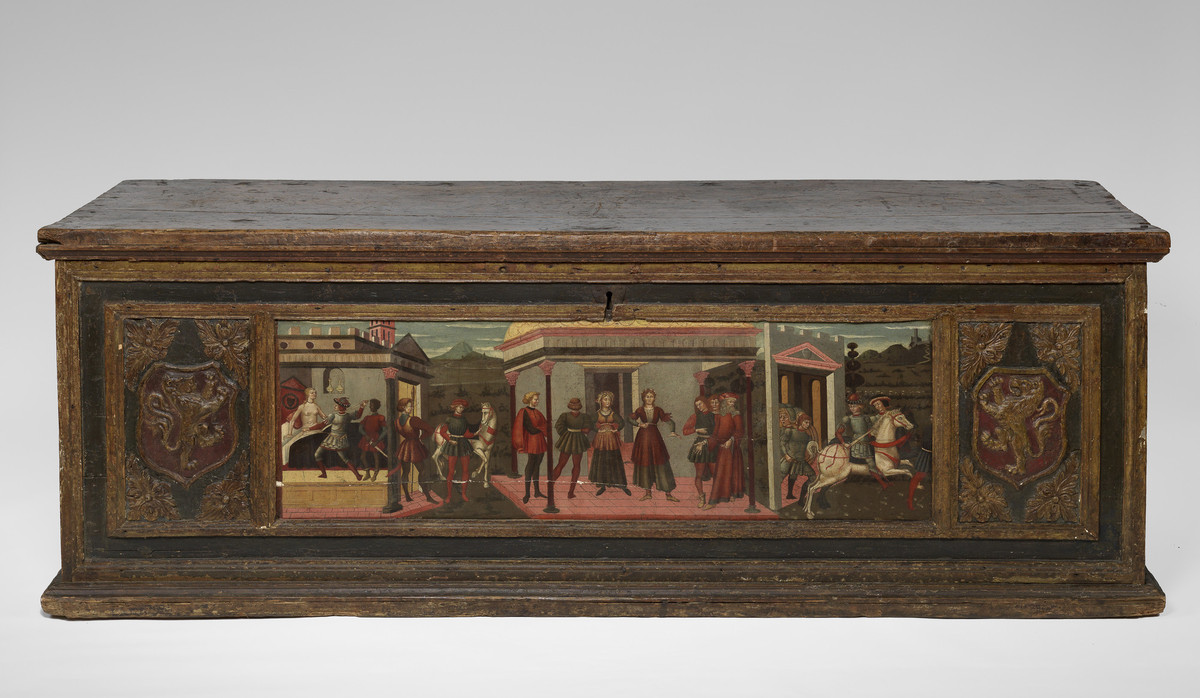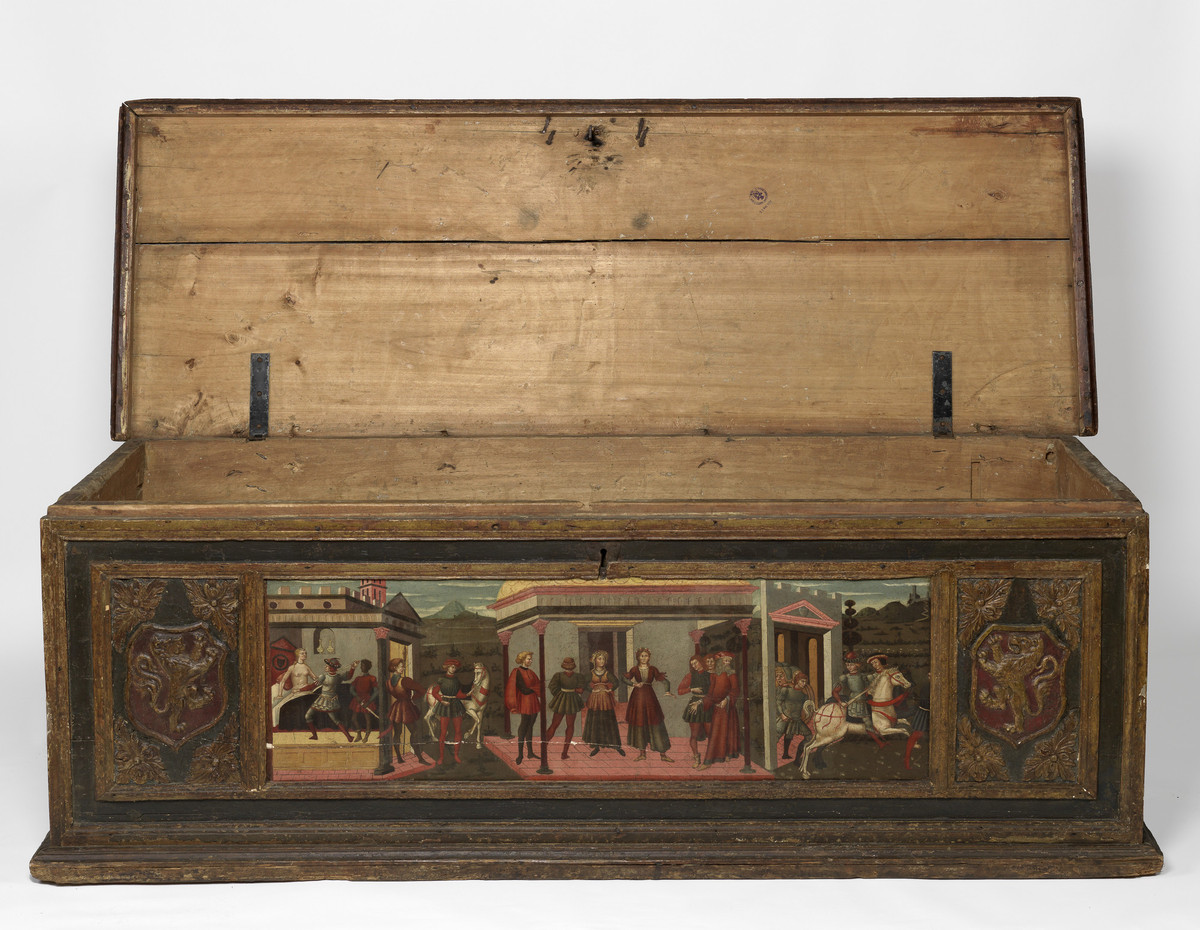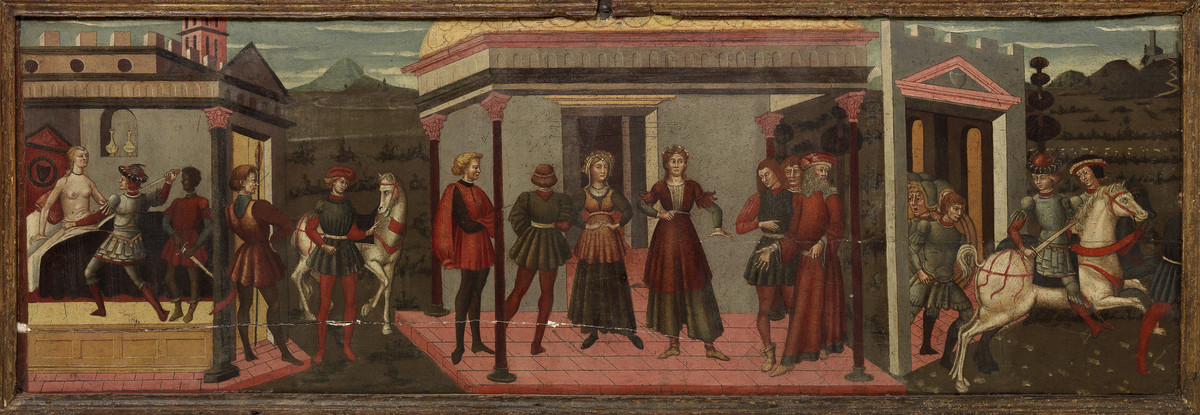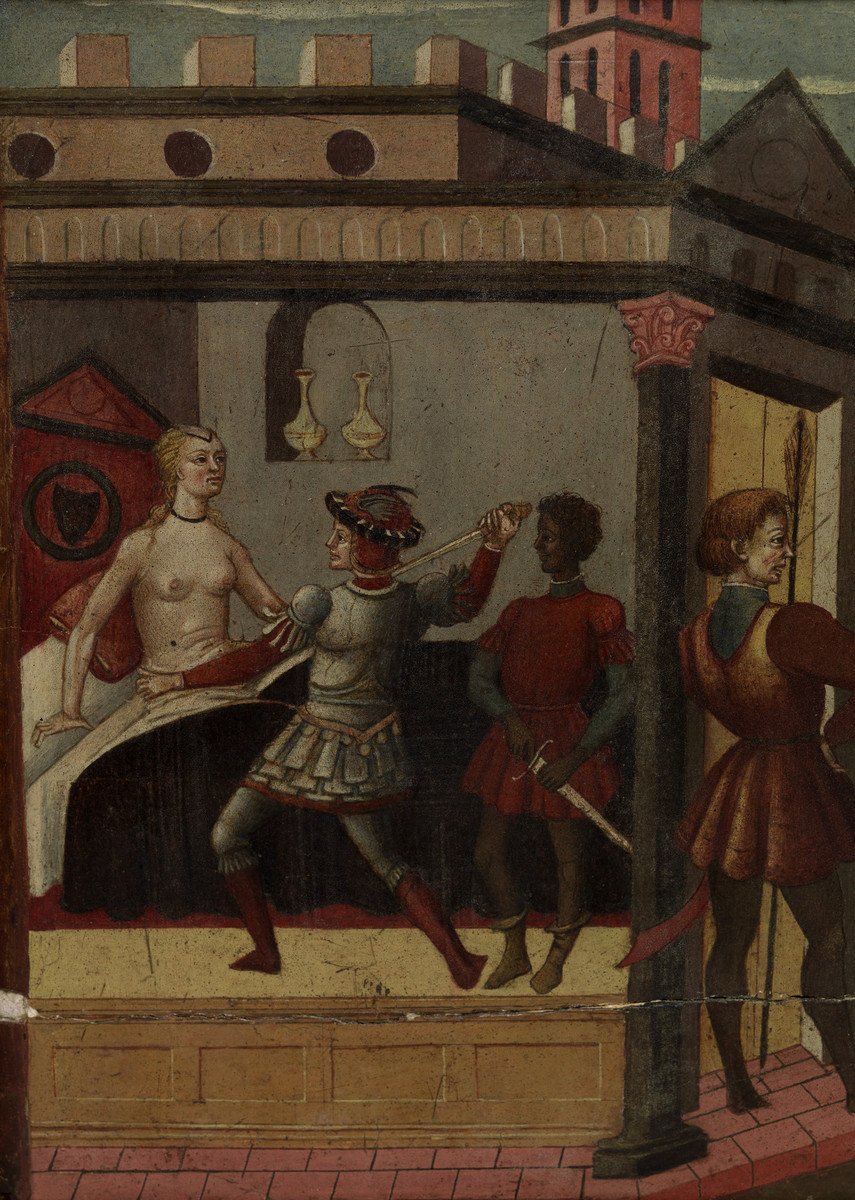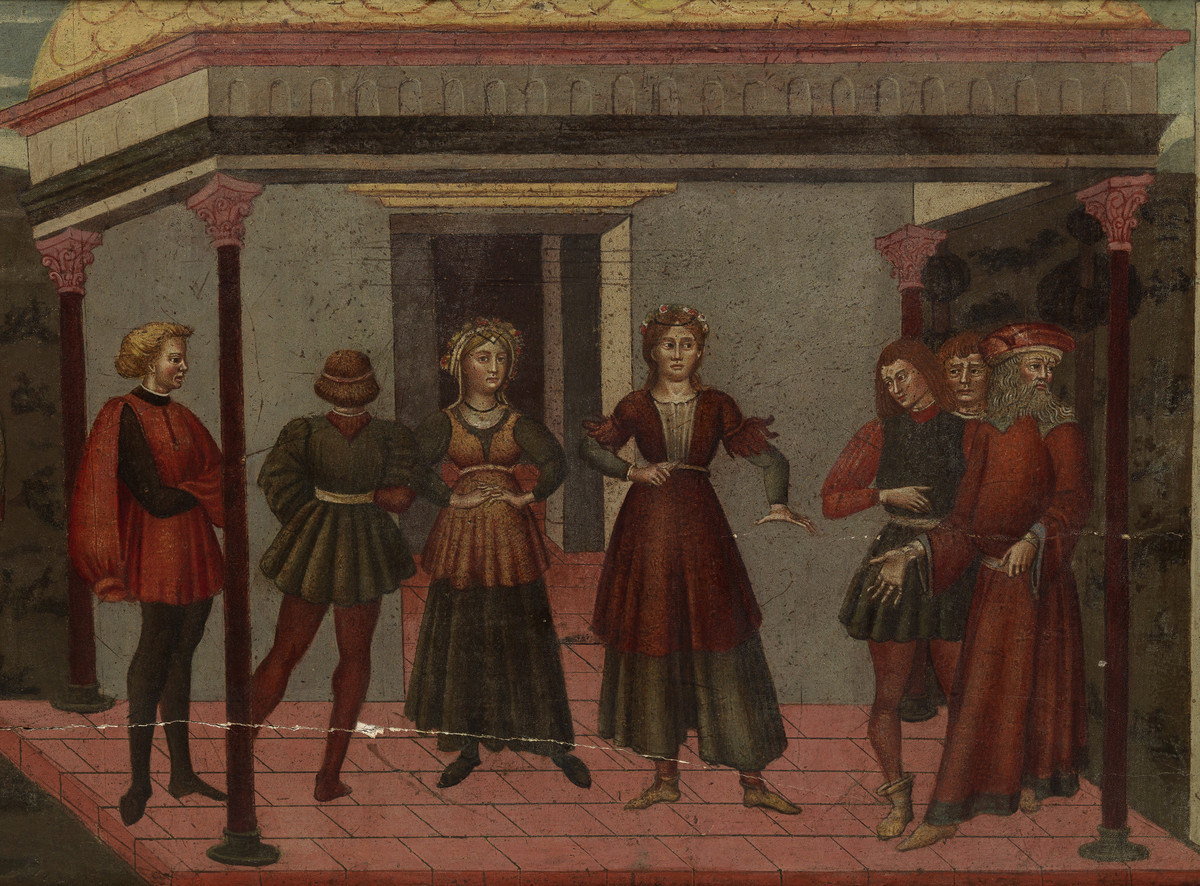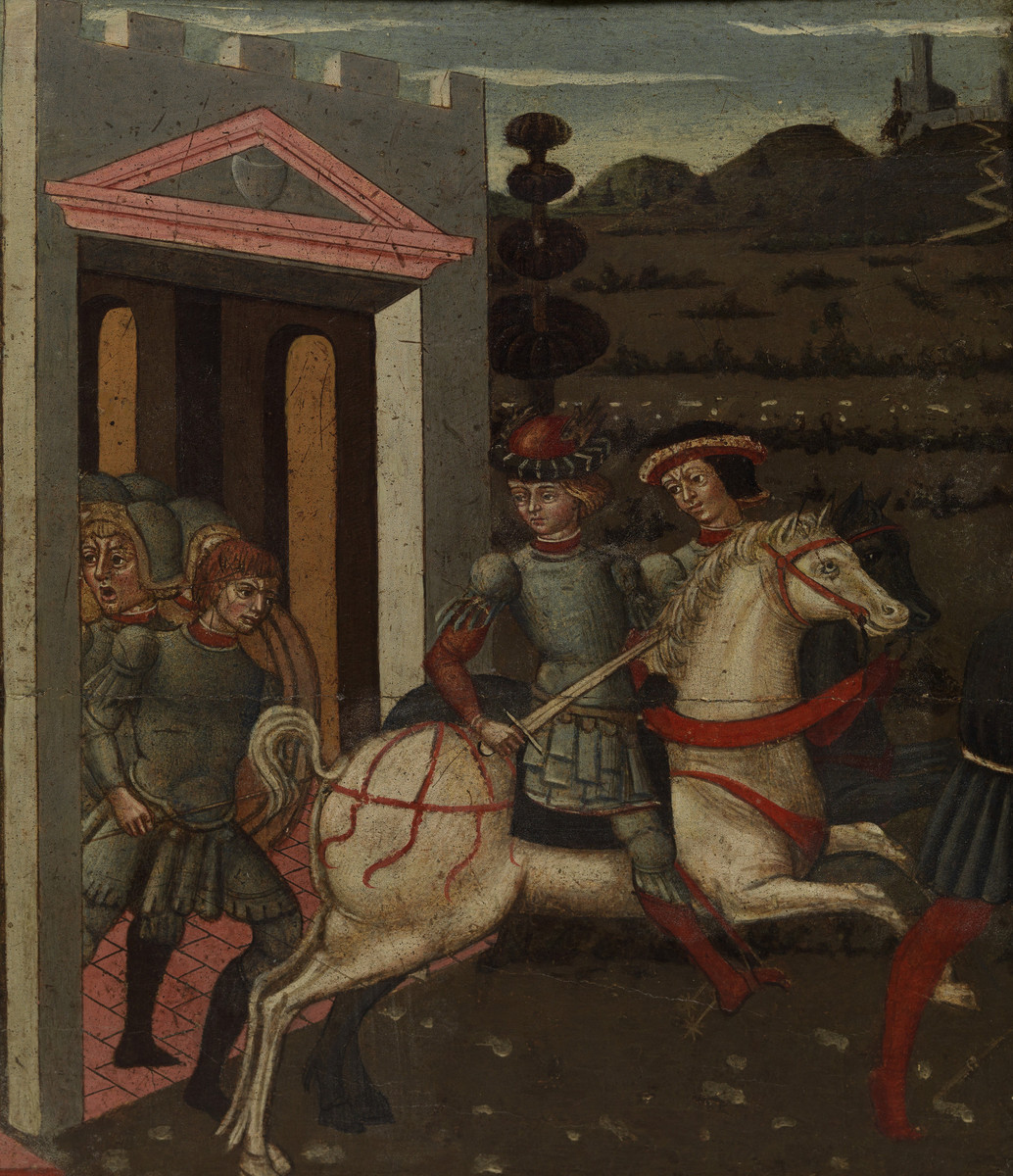On View
Unknown
Italian; Sienese
Place made: Europe; Italy, Siena
Wedding chest (cassone) with painted panel showing the Death of Lucretia, ca. 1465-1475
Overall: 28 1/8 in x 72 1/2 in x 26 1/4 in; 71.4 cm x 184.2 cm x 66.7 cm
Purchase with the Warbeke Art Museum Fund
MH 2008.13

 GIVE
GIVE